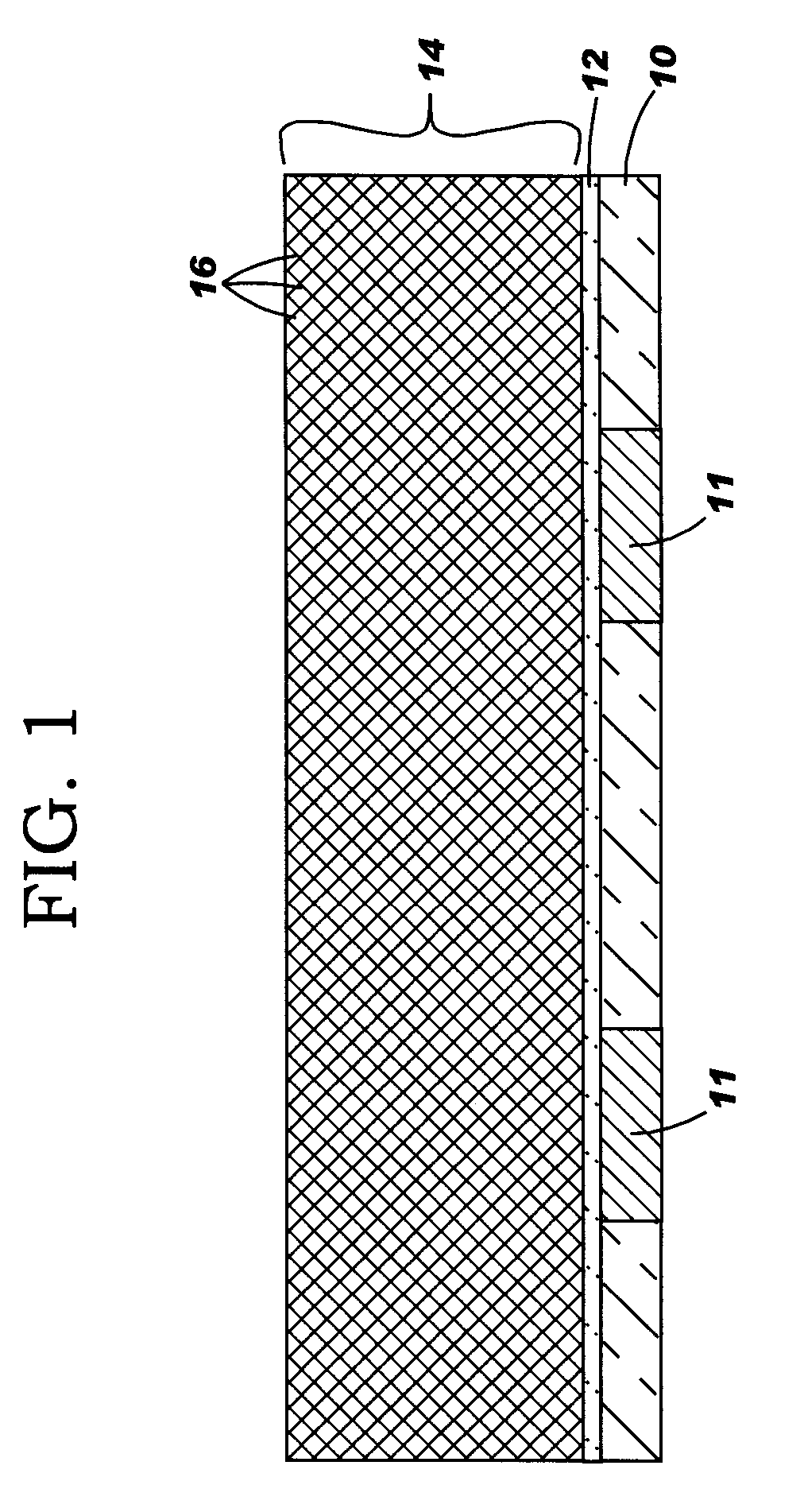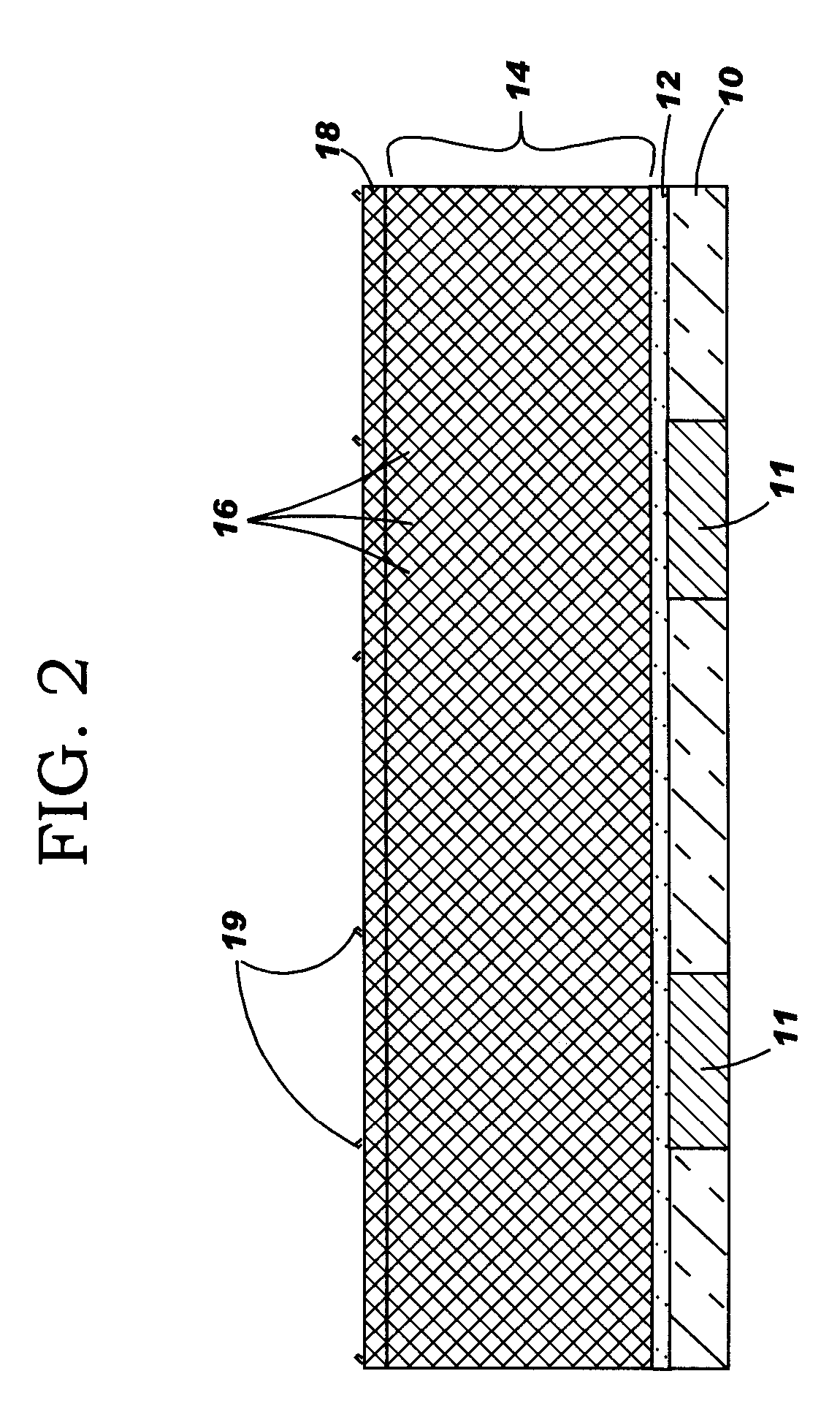Low-k dielectric material based upon carbon nanotubes and methods of forming such low-k dielectric materials
a carbon nanotube and low-k dielectric technology, applied in the field of dielectric materials, can solve the problems of cross-talk noise, limited circuit performance and functional capability of circuit elements, and limited integration of low-k dielectrics into damascene processes
- Summary
- Abstract
- Description
- Claims
- Application Information
AI Technical Summary
Benefits of technology
Problems solved by technology
Method used
Image
Examples
Embodiment Construction
[0018] With reference to FIG. 1, a substrate 10 is covered by a layer 12 of a suitable cap material, such as silicon nitride (Si3N4). Substrate 10 contains features 11 that are to be contacted, like a silicon diffusion region (e.g., a source or drain for a semiconductor device) or an underlying wiring or metallization structure. Substrate 10 may be a semiconductor wafer composed of any semiconductor material including, but not limited to, silicon (Si), silicon germanium (SiGe), silicon-on-insulator, and other like Si-containing semiconductor materials. The substrate 10 may be doped with either n-type or p-type impurities, depending on the desired device or circuit element to be fabricated, and may contain various isolation and / or device regions either formed in the substrate 10 or on a surface thereof. Substrate 10 may also be one of the interconnect levels of a multilevel interconnect structure, a dielectric material, a buried barrier layer, a metallization line, or another substra...
PUM
| Property | Measurement | Unit |
|---|---|---|
| dielectric constant | aaaaa | aaaaa |
| temperature | aaaaa | aaaaa |
| dielectric constant | aaaaa | aaaaa |
Abstract
Description
Claims
Application Information
 Login to View More
Login to View More - R&D
- Intellectual Property
- Life Sciences
- Materials
- Tech Scout
- Unparalleled Data Quality
- Higher Quality Content
- 60% Fewer Hallucinations
Browse by: Latest US Patents, China's latest patents, Technical Efficacy Thesaurus, Application Domain, Technology Topic, Popular Technical Reports.
© 2025 PatSnap. All rights reserved.Legal|Privacy policy|Modern Slavery Act Transparency Statement|Sitemap|About US| Contact US: help@patsnap.com



